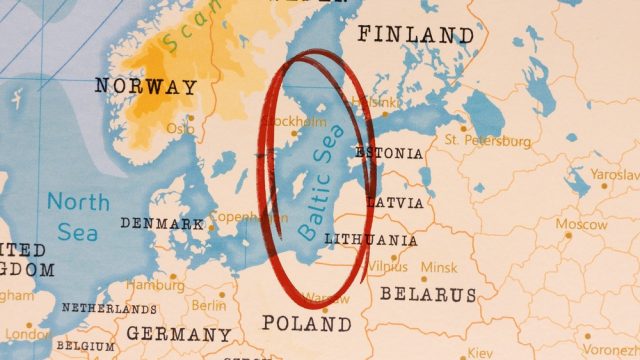
In the frigid Baltic Sea, another chapter in the geopolitical challenge between the West and Russia is unfolding. A major incident involving an electrical cable and four telecommunications cables in the waters between Finland and Estonia has raised suspicions of sabotage. Authorities in Helsinki were quick to point the finger at a possible operation aimed at critical European infrastructure.
The suspicion became almost certain after the Finnish Coast Guard blocked a Cook Islands-flagged tanker, part of Russia’s so-called “shadow fleet. This network of oil tankers, whose ownership is difficult to trace, is accused of evading Western oil sanctions.
The case: energy and communications in the crosshairs
The alarm went off on Christmas morning when the Estlink 2 cable, which carries electricity from Finland to Estonia, was sheared. A few hours later, four other telecommunications cables were damaged, severing connections between Finland, Estonia, and Germany. Despite the damage, the Finnish government was able to secure power to Tallinn from alternative sources, avoiding any immediate impact on the population.
The tanker Eagle S, which ran aground near the Porkkalaniemi peninsula, became the focus of the investigation. As it was not anchored at the time of the interception, it is speculated that the anchors were used to shear the cables. Finnish authorities are investigating whether the five incidents are connected, but for many, the intent to target critical European infrastructure is now clear.
“We will respond decisively to any interference,” said Finnish Prime Minister Petteri Orpo, announcing close cooperation with the European Union and NATO to deal with the threats.
The European and NATO response
European Commission President Ursula von der Leyen, along with High Representative for Foreign Policy Kaja Kallas, condemned the attack, calling the Russian “shadow fleet” a “threat to European security.” NATO, through Secretary General Mark Rutte, said it was ready to step up surveillance in the Baltic and increase assistance to the most vulnerable member states.
This incident comes just weeks after another sabotage in northern Europe: two telecommunications cables between Denmark and Sweden were severed in November, with a Chinese ship, the Yi Peng 3, suspected of being responsible. Beijing has denied all accusations and refused requests for cooperation from Swedish authorities.
The strategic role of the Baltic Sea
The Baltic Sea remains a crucial hub for Europe’s energy and digital security. With NATO’s expansion in the region and increasing pressure on Moscow, sabotage is becoming a new weapon in the hybrid conflict. Attacking undersea cables means disrupting communications, energy and data vital to governments, businesses and citizens.
Tensions are not confined to the Baltic Sea. The contract for Russian gas transit through Ukraine expires on December 31, creating new uncertainties. Austria, Slovakia and Hungary, key countries for Russian energy distribution in Europe, risk becoming political and strategic targets in a scenario of increasing polarization.
The Urgency of a Common Strategy
The vulnerability of European infrastructure is no longer just a technical issue, but a political problem of strategic importance. Attacks on submarine cables and pressure on energy supplies require a coordinated response from EU member states and NATO.
Investment in surveillance technologies, increased naval presence and diversification strategies are needed to prevent a single attack from isolating entire regions. The protection of energy cables and networks is not only a matter of national security, but of the stability of the entire continent.
Europe and the Atlantic Alliance face an unprecedented challenge: ensuring the security of invisible but vital infrastructure in an increasingly sophisticated hybrid warfare environment. If the sabotage in the Baltic is a glimpse of what could happen on a larger scale, the time to act is now.



 Subscribe
Subscribe